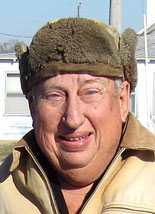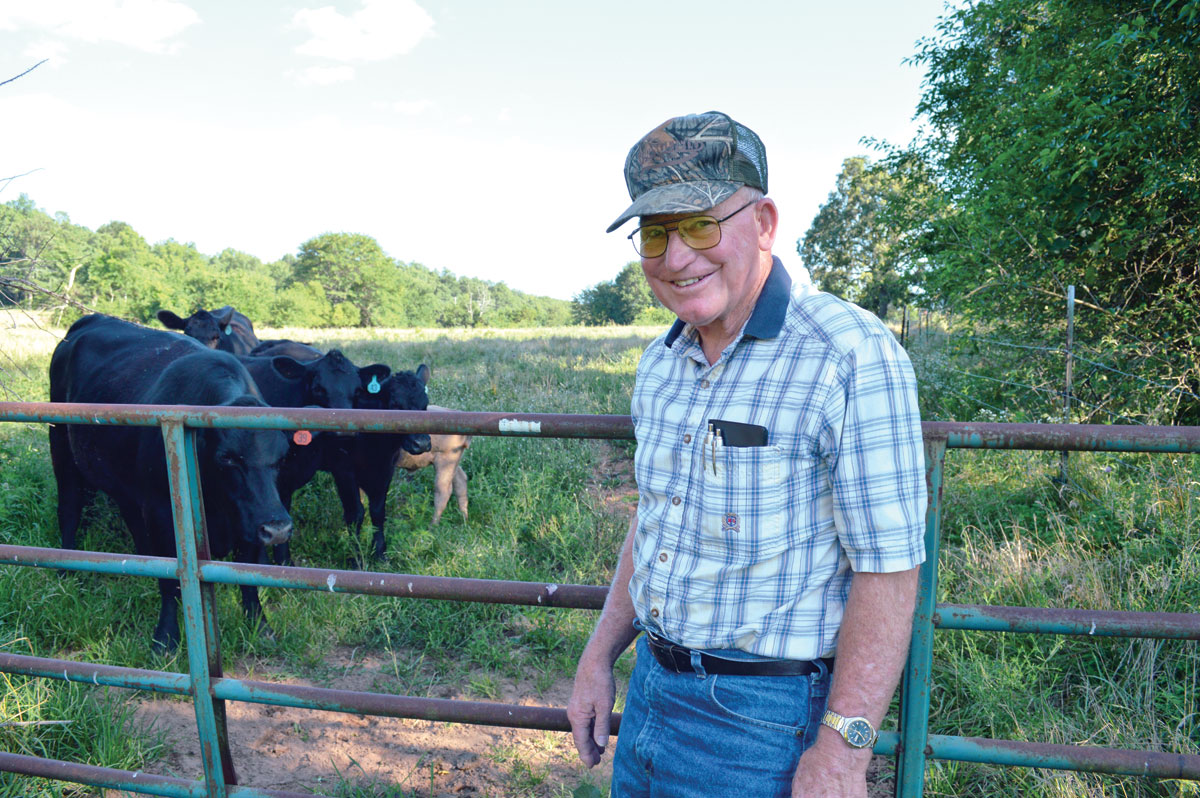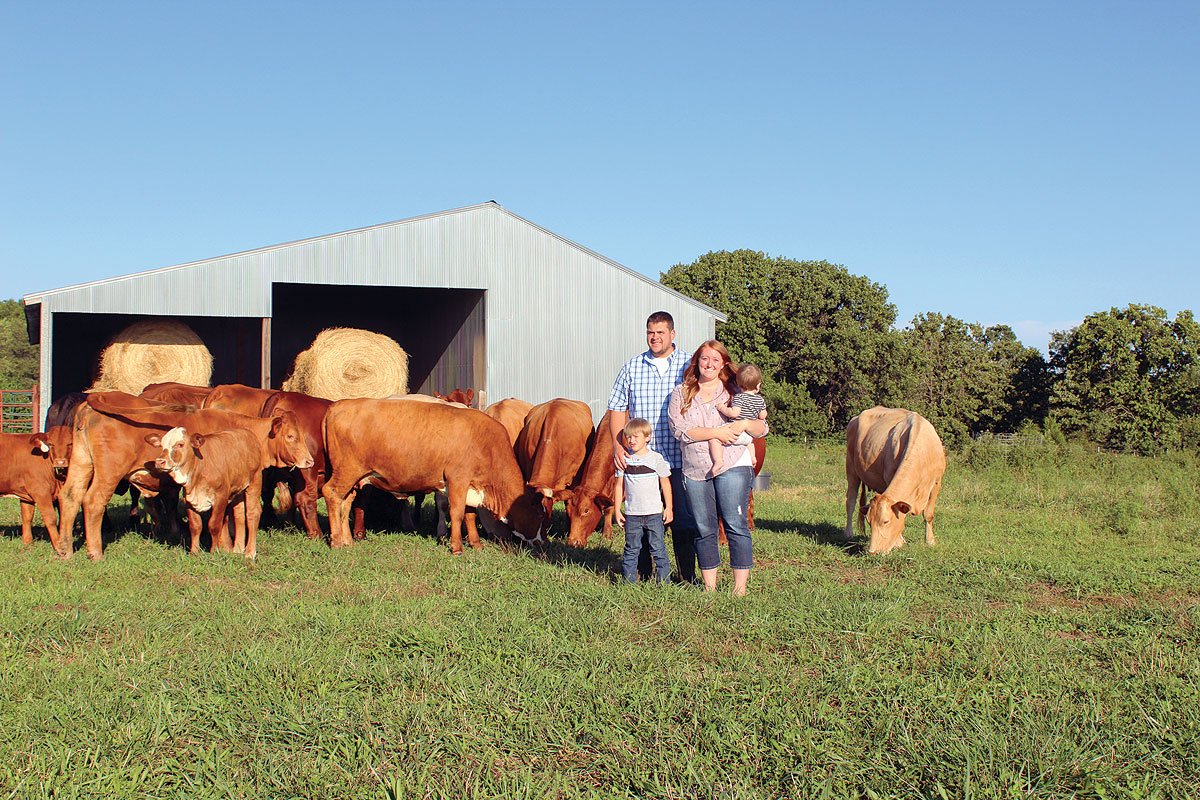
Where Bill and Linda Yarberry live might be similar to a small village. Their mailing address says Milo, but Milo has only about 90 people and takes up a whopping 52 acres of land just east of I-49 in Vernon County, between Lamar and Nevada, Mo.
The Yarberry farm on the other hand, measures out at 632 acres. They keep about 130 Angus momma cows, calves of course, replacement heifers and two Registered Angus bulls.
The Yarberrys moved here in 2000 from a more suburban location near Pleasant Hope, Mo.
Bill explains, “We were looking for a more rural place. We looked east first, near Mountain Grove. But it was too hilly so we decided to look west. We drew a 50-mile circle around Springfield, we knew anything closer would be too expensive to run cattle on.”
In either “it’s a small world” category or one of ironic luck, Bill noticed a real estate ad in Ozarks Farm & Neighbor. Within a matter of months, they closed on the farm and moved their operation.
Bill and Linda grew up in farming. They cut and bale their hay on about 300 acres. Bill likes to keep his “machinery inventory low” but has two tractors, a mower, a rake, baler and bush-hog. “We try to avoid buying hay,” Bill said, “but this year we had to buy some. What with us getting only 27 inches of rain instead of the usual 43.”
Improvements include a well in what is a winter pasture and a summer hayfield. Bill noted, “They can get water there whenever they like.” Most of the cows winter there with water, hay, a creep feeder for calves and some trees for shelter.
Bill keeps input costs low but creep feeding is one area he feels strongly about. “I don’t feel like we make that much money on weight gain but the main reason we creep feed, it has AS700 in it. In winters like this, we fight respiratory diseases all the time. Now we hardly ever have too.”
More than once Bill commented on being old (a spry 71 to be exact) and how that affects many of their decisions.
They calve fall and spring. Linda noted, “We used to do it all at once and it was overwhelming.”
They market twice a year too, at weaning. Bill takes steers to the Mo-Kan sale barn in Passaic, Mo. “I’m not a skilled trailer driver. All you have to do is get on E, make a right on I-49 to the sale barn. They have a drive-through.” Laughing, Bill added, “It’s just an easier trip for an old man.”
Bill and Linda now haul their own cattle. “We had a real fiasco one muddy spring. We just had some green corral panels and the cows were up inside those. We arranged for some people in Joplin to haul our cattle. These guys were better trailer guys, but they didn’t think about being down on the farm. They came roaring up and through a gate so they wouldn’t get stuck. Well those cows broke through those panels. We had 79 cows in there. We were lucky nobody got hurt.” From that incident on, they started hauling their own cattle to market.
Bill did get hurt badly once last year. Bill explained, “We were working cows and had them all done except two or three that wanted to stay together. I ran one back into the alleyway and then went to shut the gate.” Linda continued, “I believe that heifer thought she could jump over him.” Bill was knocked unconscious. He shows how it is still hard to raise his left arm all the way up over his head.
Another streak of independence shows in their handling of vet duties. “We like to do it ourselves because we never know if we can get them up of a morning, so we can’t schedule a vet.” Bill gives a blackleg, pinkeye and a round of respiratory, plus he likes a loose mineral that contains fly control.
The couple has learned some important lessons along the way. “He and I absolutely work together.” Bill, using his hands to illustrate, “If you pull two separate ways …”
He continued, “When we moved here we realized that what works on one farm might not work here. You have to do what the land will allow you to do, not what you think you want it to do.”
“You need to learn to think like a cow when handling them.” Linda added, “They are very smart. The older ones know what we do, except for the replacement heifers – sometimes we have to run.”
Bill shared what makes their farm successful.
“We credit our success to God but we picked a good farm. Second, using registered Angus bulls. We try to keep good bulls. We raise our replacements. We rotate pastures in summer and try to keep our cost of machinery down.
“We’ve got a really good support network. Everybody has been good to us: business people, neighbors and churches. Being a neighbor is kind of a lost art. Now that may not sound like much but you live out here in the boonies, don’t see anybody, you can get depressed easily. May not sound like much but to an elderly person… We don’t have family up here – nothing, so a kind word once in awhile helps.”







